Court Hay Farm (Rudges, Smithfield Farm, Courthay)
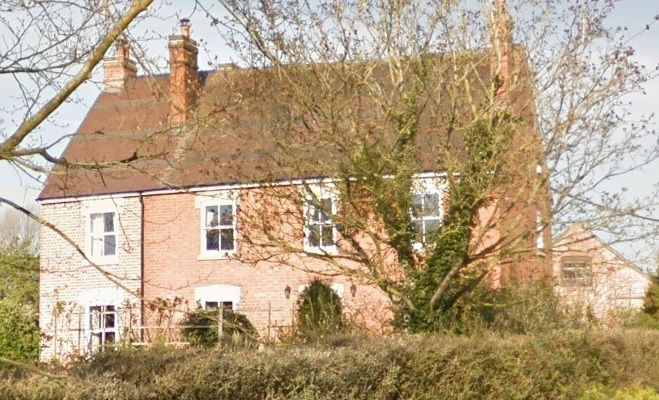
In 1732 the site was held by Richard Dobbins who sold it on to James Browne in 1738. James Browne was recorded as having borrowed money on the mortgage from a William Singelton, Esq, of Norton in 1761, 1763 and 1767. William Singleton was the resident/owner of Norton Court and the Norton Court Estate at this time.
A rental account of the Norton Court Estate by Mr C Goodwin of Granville Chambers, Portman Square, from 1877 includes details of a conveyance dated 5th May 1845 from James Croome and others to Miss Elizabeth Frances Webb; "The first recital is of a deed of 1st May 1751 whereby a chief rent of £4-6-8 was created. The chief rent was in consideration of £121-6-8 conveyed by Croome and others to Miss Webb and the parcels of the deed state that it was issuing out of and charged upon the messuage or tenement therein mentioned (viz in the deed of 1751) situate in Norton theretofore in the tenure holding or occupation of John Butt his assignee or assigns then of Richard Dobbins and James Browne or one of them etc and one cottage wherein John Barrow then formerly dwelt situate at Norton and divers other lands and tenements and hereditaments likewise situate at Norton and theretofore also in the occupation of John Butt or of his assigns then of Richard Dobbins and John Browne or one of them which said yearly rent of £4-6-8 was with other rents formerly bought and purchased by John Flock … of and from Sir Richard Anderson of Pendley in the County of Hertford, baronet, David James citizen and haberdasher of London and Richard Hall of the middle temple, London, gentleman, on the fifth day of January in the twenty first year of the reign of King Charles the second".
Detailing a property that was occupied by Richard Dobbins and then James Browne this may have related to Court Hay and associated lands. If so it provides earlier details of this site.
Richard Anderson of Pendley, Herts, is the first named owner. Sir Thomas Chamberlayne had held the manor of Norton and was succeeded by his son Sir John Chamberlayne who sold the manor in 1602 to Sir Henry Anderson, alderman and sheriff of London. The manor descended in 1605 to Sir Henry’s son, Sir Richard, and in 1630 to his son Henry (created baronet 1643), whose son Sir Richard inherited in 1653. He sold the manor in 1682; 'the twenty first year of the reign of King Charles the second' as mentioned in the rental account. Around this time the manor was acquired by Richard Whitmore of Lower Slaughter although the rental account states that the land in question was purchased by a John Flock who has not been further identified. John Butt appears to have been the next owner before it passed to Richard Dobbins then James Browne.
The rental account provides further details although by 1877 the earlier details are not clear. "There is credit given in this account for two sums of £1-13-8½ each from Richard Butt and Henry Butt respectively making together £3-7-5 but there is no reference to the remaining £0-19-3 to make up the whole chief rent of £4-6-8. In answer to queries probably raised by the Succession Duty Department in 1878 when the duties or the death of Mr Charles Walker were being assessed Mr Goodwin said 'I have no knowledge how this quit rent was created. When I first knew of it, it was stated to be £3-7-5 issuing out of lands belonging to the late Mr Vick. These lands were sold or divided by Bruton & Co in August 1861 and in a particular then furnished by them the rent was divided and stating to be issuing as to Lot 1 now Richard Butt £1-13-8½ on the following lands; Orchard (0-3-34), Barns and sheds (0-1-18), Orchard (1-1-18), Field (4-2-37), Field (0-10-1), Field (6-2-10); (23-3-37)'". There is a note appended to the document stating that "This part of the rent has been sold (in 1923) by Capt G N Walker to Mr Brook of the Barn Farm". "Although the chief rent of 0-19-3 was conveyed by the deed of 17th May 1871 to the late Charles Walker there is no reference to it in the succession account passed on his death".
On 17th November 1784 Thomas Browne sold on a part of the mortgage to William Pullin before selling the remainder to Thomas Rudge in 1789. The Indenture that transferred the property from Thomas Browne to Thomas Rudge was dated 12th June 1789 and read as follows; “Indenture … between Thomas Brown of Norton in the County of Gloucester yeoman of the one part and Thomas Rudge of the City of Gloucester Gentleman of the other part … for and in consideration of the sum of five shillings … all that messuage tenement or dwelling house and farm situate lying and being in the parish of Norton … together with all and singular the barns stables cyder house cyder mill press and appurtenants thereto belonging courtyards gardens curtillages orchards arable land meadow and pasture ground commons common of pasture and all other hereditaments and premises deemed as part of and belonging to … which are now in mortgage to William Pullin of Charfield in the County of Gloucestershire yeoman … to have and to hold … from the day next before the day of the date of these presents … unto the full end and term of one whole year yielding and paying … at the expiration of the said year one pepper corn.”
Thomas Rudge was still the owner at the time of the Inclosure Acts reaching Norton in October 1807 and the property was to remain known as ‘Rudges’ for some years afterwards.
The following description of the property and map is based upon the inclosure awards of 1806.
No 148 - Orchard 1a 1r 19p
No 149 - House, yard and garden 0a 2r 32p
No 150 - Allotment in Smithfield 7a 1r 23p
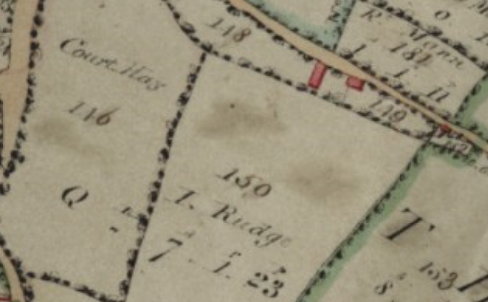
The name Thomas Rudge is clear in Plot No 150 and Plot No 146 is named as Court Hay.
It is not known how accurate the representations of the buildings were on the Inclosure map but it was once said by William Cook, an old Norton resident, that he could remember the house running lengthways alongside the lane and this is what appears to be shown on the map.
When Thomas Rudge snr died the property passed to his son Revd Thomas Rudge who sold it on to Edward Webb to become part of the Norton Court Estate in December 1810. It is quite possible that none of the owners given above actually lived at the farm, letting it to tenants who would have farmed the land paying rent to the owner. Indeed when the property became part of the Norton Court Estate it was recorded that a John Baylis was tenant.
In 1816 it passed to Thomas Jeynes who in turn passed it on to Josiah Bartlett in 1830 - see plan below.
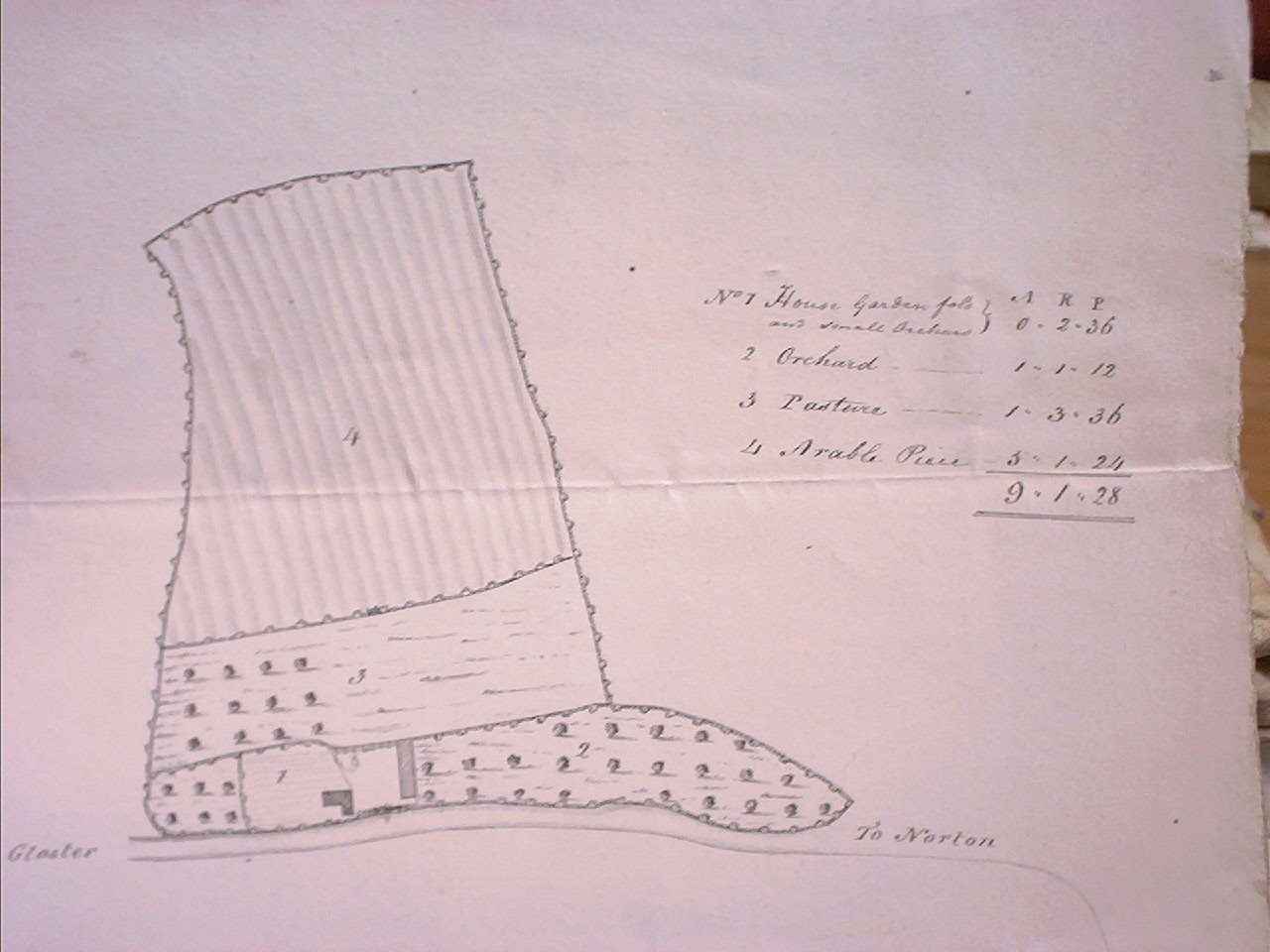
In the ‘terrier and valuation of the messuages, lands, and other hereditaments liable to poor rate in the parish of Norton’ from 1838 the occupier is recorded as George Simmons who was also the publican at The Kings Head Inn where he actually lived. George was born in Norton in approximately 1794 and as he was living at the Inn he presumably had tenants at ‘Rudges’ as it was still known at that time. George Simmons is still the recorded occupier on 6 April 1863 when a record of the Norton Court Estate described the property as follows :-
No 129 - Two cottages and gardens 0a 2r 32p
No 130 - Orchard and barn (pasture) 0a 1r 1p
No 131 - Part allotment in Smithfield (pasture) 1a 1r 36p
No 132 - Part allotment in Smithfield (arable) 5a 1r 27p
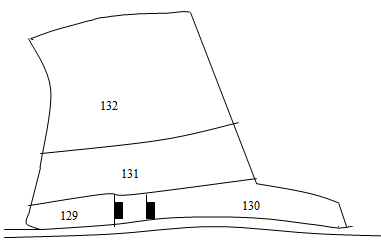
It is interesting to note that it was recorded that there were two cottages on the site at this time or perhaps, as just the one building and barn is pictured, it was still just the one building but was occupied by two families.
Although he was recorded as occupier of the farm in the Norton Court Estate records from 1863 it would appear that the Simmons family had made a decision to give up the farm business the previous year as the following auction sale reported in The Citizen newspaper of 12 July 1882 reports; "Kings Head Inn, Norton, Gloucestershire,. Messrs T Rust & Co. Have been favoured with instructions from Mr William Simmons who is giving up the business. To sell by auction on the above premises on Friday next July 14th, 1882, the whole of the household furniture, farm implements, garden tools, harness, and out-door effects, including 30 head of capital poultry". The fact that they are not selling the property itself suggests that they were tenants and not owners.
By 1864 the property was occupied by Henry James and his family and appears to have been a single dwelling house once again. Henry had formerly been a chair maker in his father’s business in the village but had chanced his hand at another trade and was now described as a butcher. Henry’s father, William James, had built Dunsworth Villa opposite and was living there at this time.
Another record of the Norton Court Estate taken on 17 April 1868 depicted the property as shown below, with the buildings marked slightly differently to 1863 but more in keeping with 1806 and the ground plan that is believed to have existed.
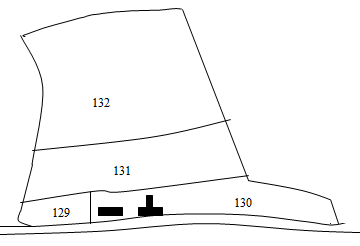
In April 1868 the property was described as “The dwelling house with garden, yard, barn, stabling, slaughterhouse, is situate adjoining the High Road near to the village green together with 9a 0r 25p of arable and orchard land. This portion is tithe free and subject to a land tax of eight shillings per annum”. Henry James appears to have been using at least one of the outbuildings as a slaughterhouse, no doubt in connection with his business as butcher. Henry and his family were still living here in 1881 but had left prior to 1891.
It is not known when the current house was built although it features an early example of cavity wall that is believed to date from the end of the nineteenth century. Robert James (Jim) Stubbs, born in Norton and later a builder himself, once told Bryan Welch (a later owner) he had heard that the house had been built by Freemans who were builders at Longford at that time. To support this story, in 1891 James Freeman a 41 year old bricklayer of Norton along with his wife Ellen and eight children were resident at what was then known as Dunsworth Farm; surely the same place. His two eldest sons were also recorded as a bricklayer and a brick labourer respectively. This must have been the family who became builders at Longford and as they were in residence in the 1890s it seems quite reasonable to suspect that they may have had a part in altering or rebuilding the house. The auction catalogue from 1923 describes the house as being “…of modern construction…” which would also fit with this date range.
The Freemans were still here in 1898 but had moved on by 1901 when an Augustus Hook, a 28 year old farmer from Chalford was in residence at what had by then become known as Smithfield Farm. He was living with his wife and young son. A George Freeman, quite likely a son of James Freeman was also in residence as a farm worker.
At the time of the Ladyday rentals in 1908 Courthay was held by J A & J Hook at £50pa. In 1910 the occupier was recorded as Jasper Hook and was known as Smithfield Farm. Jasper is remembered as being a “funny little man….”. In 1911 and 1921 Jasper was here with his wife Susan, living in a 6 room property then named Court Hay Farm.
The property remained in the hands of the Hook family as tenants until an auction on 28 July 1923 when Mr A J Hook (Augustus Jasper ?) bought the farm from the Norton Court Estate for £1500. At the auction the property is named Court Hay Farm and this is the first identified reference to this name. The following is an extract from the description of the property taken from the auction catalogue; “Bruton Knowles & Co were instructed by Capt G N Walker to sell this farm by auction at The Bell Hotel, Gloucester, on Saturday July 28th 1923 at 3 o’clock punctually”. Lot 1 was Norton Farm. The general remarks section of the auction leaflet stated; “The Norton and Courthay Farms form part of the Norton Court Settled Estate, situated in an excellent position on the main road from Gloucester to Tewkesbury, about 4 miles from Gloucester and about 6 from Tewkesbury. This Estate has been maintained by the Vendor in every respect as a residential property, and with the co-operation of his tenants a very high standard of repair and agricultural condition has been reached. The buildings, which are of a substantial character, have been well cared for, as have also the field gates which have been maintained by the Vendor. The fences generally are in good order, and the whole of the land is in an excellent state of cultivation. Captain Walker has for many years taken a keen interest in fruit growing, and particularly in the management of pasture orcharding, and has kept in touch with the latest scientific experiments and discoveries on this subject. He has retained under his own control and personal supervision the planting and management of the fruit trees in the Farm orchards, and with the assistance of his tenants very excellent results have been obtained, the County first and second prizes in the orchard competition having been won in the season 1921. The orchards on the Norton and Courthay Farms are excellent examples of the most approved methods of management. The farms are well placed for market facilities, being about 4 miles from Gloucester Market, which is well-known as one of the most important stock and fruit markets in the West of England. They are also within 6 miles of the market at Tewkesbury. There is a good service of motor buses between Gloucester and Tewkesbury, passing within a few minutes’ walk of either farm. The whole of the valuable growing timber is included in the sale. The property is free of Tithe and Land-tax”.
The auction leaflet goes on to describe Lot 2; “Court Hay Farm, a very attractive small holding with excellent dwelling house, buildings and about 16a 3r 17p of valuable pasture and pasture orcharding, of which the following is a schedule taken from the Second Edition of the Ordnance Survey :-
Parish of Norton
No on Map Description Area
181 Pasture 7–1- 5
182 Pasture 5-2-15
183 Pasture 1-1-29
Pt 184 Pasture orchard 1-0- 2
191 Court Hay farmhouse, buildings, yards, etc 2- 4
192 Pasture orchard 1-0- 2
16-3-17
The dwelling house is situated near the picturesque village of Norton, is of modern construction substantially built of brick, and contains sitting room, kitchen, back kitchen with furnace, pantry, dairy with slate shelves, wash-up shed with iron roof and concrete floor, four bedrooms and box room. There is an excellent kitchen garden. The water supply is from a well in the garden with a pump at the side of the house. The buildings are mainly constructed of timber with tiled and iron roofs, and comprise loose box and trap-house, 3 pig stys, cowshed for 2, chaff-house, cart-shed, cider-house, 2-stall stable, cowshed for 3, small stable and brick built and tiled meal house with granary over. The shed in the orchard and the fowl houses are the property of the tenant. The holding lies within a ring fence and has long frontages to good roads. It is wholly pasture and pasture orcharding of excellent quality. The orchards have been well maintained and a number of young trees have been planted: orchard No 192 contains 34 fruit trees, including 17 perry pears, 4 Bramley’s Seedling and 4 Warner King; and orchard No 184 contains 46 fruit trees, including 5 dessert pears, 5 Warner’s King, 4 Newton Wonder, 3 Blenheim Orange and 3 perry pears. The buildings, fences and gates are in good order. The valuable growing timber is included in the sale. The holding is let to Mr A J Hook on an annual Michaelmas tenancy at a rent of £65 per year, which includes an orchard and small arable field containing an area of 1a 1r 19p not included in the sale. The rent apportioned to Lot 2 for the purpose of the sale is £58. The orchard and arable field referred to are shown edged pink on the plan and are numbered 85 and part 93. The purchaser of Court Hay Farm will be offered the opportunity to lease this land for a term of seven years as from the 29th September, 1924, or such later date as the existing tenancy shall be terminated, at a rent of £7 a year.
This lot is sold subject to the right of the Vendor to continue the use of the sewage ditches to the south of Nos 181 and 182 and to the east of Nos 182 and 192, and the purchaser shall raise no objection to such user. The Vendor will covenant to maintain and keep clear and in good condition the ditch to the south of Nos 181 and 182. This lot is sold subject to a way leave for the continuance of the user of the drain between the points C, D and E on plan, with the right to maintain and renew the same when necessary. The boundary to the west of No 184 is shown by boundary pegs, and a fence will be erected on this boundary by the Vendor if and when required by the Purchaser. Pending the erection of the fence and after the termination of the existing tenancy the Vendor will be prepared to let at a nominal rent the portion of No 184 not included in the sale. This lot is free of Tithe and Land Tax. Conditions of sale - No auction fees
Particulars – Shelves above dresser in kitchen are tenants and also force pump and piping in wash-house for milk cooling plant and cistern in connection therewith in dairy. Fruit trees. Lot 2, correct tenants name is, J R Hook.
Position – Easy distance from Gloucester market and only six miles from Tewkesbury. Pleasant position on a side road away from dust and traffic of main road, yet close to bus service.
Character of the house – Facing south and buildings (new range in kitchen) all conveniently arranged and forming a model farm homestead. Good yards.
State of repair – Buildings and fences. Cottages – Cottage garden. Good land throughout – Arable land in good condition (credit to tenant) crop of seeds, wheat, roots. Pasture well slagged by tenant. Orcharding – Full benefit has yet to come. Orchard will undoubtedly bring in a good income. Good sorts as mentioned. Very compact. Good frontage. No tithe or land tax – Timber included. Tenant – State of farm a credit to his enterprise and good farming. Hope he will purchase. Advantage to tenant of buying; value of agricultural land as investment. Frontages. Opportunity of renting meadows”.
Whilst Jasper Hook was in residence the farm also provided the land for the school garden and this remained here until it was moved to the Vicarage with the arrival of Rev Evans Prosser in 1934.
Court Hay Farm next changed hands on 24 March 1936 when Jasper Richard Hook sold it to Mary Elvira Theyer Bridge and her husband Frank for £1400. It is thought that Frank and Molly, as she was known, never lived at the farm, living opposite at Dunsworth Villa. At the time they bought it Frank’s parents, George and Lucy Bridge, lived here along with a Mr Osmond James Loveridge and Mrs Ethel May Loveridge; Frank Bridge’s brother in law and sister.
Frank was baptised in July 1896 at Coleford, Forest of Dean, son of George William Bridge and Lucy nee Harris who were the innkeepers at The Plough Inn, Coalway, at the time. Frank was still living with his parents and siblings at Gorsty Knoll, Coleford, in 1901, and at Ellwood Lodge, Coleford, in 1911, with his father then employed as a stone quarry foreman. By1921 they were living at The Crews, Upton Bishop, where father George was farming and Frank was assisting. The family came to Norton later that year and they lived briefly at Yew Tree Farm. A notice placed in The Citizen newspaper of 6 October 1921 may actually record their moving to Norton; “Lost, between Upton Bishop and Newent, a part of an iron bedstead. – All expenses paid on information to G Bridge, Norton, near Gloucester”. The family appear to have left Norton just a few years later and Frank married Mary Elvira Theyer ‘Molly’ Neems, of the Vicarage, Treddington, in 1930 at Treddington. Mary Elvira Theyer Neems was born in 1892, daughter of John Neems and Elvira Theyer. By the mid-1930s parents George and Lucy had returned to Norton and were living at Courthay Farm whilst by 1937 Frank and Molly were briefly living at The Hut, Norton [this property has not been positively identified but may have been located at what is now Jasmine Cottage, Priors Norton]. By 1938 Frank and Molly had settled at Dunsworth Villa from where Frank worked as the village milkman. Frank’s mother Lucy died in 1943 and father George in 1953.
Mr Bridge senior is remembered as being a tall man who originated from the Forest Of Dean. Mrs Loveridge who is remembered as having “…curly white hair…” died in 1948 and Mr Loveridge who it is remembered “…always had a pipe in his mouth…” died in 1963. Frank and Molly Bridge used to supply milk to the village from a small dairy at the front of the farm. This could never have been a very profitable concern with a just a small number of hand milked cattle being kept at any one time. Frank would walk around the village with a wooden yolk over his shoulders holding a milk churn at each end. He would ladle the milk from the churns into everyone’s jugs.
On 29 March 1965 Norman William Bridge signed a tenancy agreement with Molly Bridge of Dunsworth Villa to occupy Courthay Farm on a monthly tenancy at £208 per annum. Norman was a nephew of George and Lucy Bridge, born on 23 June 1911 at Coalway, Forest of Dean. The agreement was for the dwelling house and garden but excluded the dairy and the garage. It is believed that Norman used Court Hay Farm as accommodation land, buying cattle at the local markets and slaughtering them on the premises as and when required although this was again very small scale. Jeremy Phelps of Yew Tree Farm remembered when, as about a 7 year old, he was wandering past the farm and witnessed his first pig being slaughtered in the yard. Peter Hiller remembers delivering The Citizen newspaper here and seeing blood pouring out from under the door of the farm building adjacent to the gate so we know which of the outbuildings was being used as the slaughterhouse. Norman Bridge was also a butcher by trade having a shop in Tewkesbury and was still at Court Hay Farm when he died from heart failure on 22 September 1973. His daughter Joyce Lucy had married George Wellon and was living at Forthampton at this time.
Frank and Molly Bridge remained at Dunsworth Villa until their deaths; Frank in 1968 and Molly in 1977. Molly was at Treddington when she died of heart failure at Tewkesbury Hospital on 12 January 1977 causing Court Hay Farm to be put up for auction.
On 12 May 1977 J Pearce, Pope & Sons were instructed to sell Courthay Farm by auction at the Swan Hotel, Tewkesbury. It was sold with a freehold tenure and vacant possession from 9 June 1977. It had a rateable value of £200, with general rates of £129.60 per annum. It was sold subject to an existing wayleave agreement that Molly Bridge held. It was described as;
“The property which occupies a delightful rural situation is substantially built and of attractive appearance having brick elevation beneath a tiled roof. The accommodation is on 2 floors and comprises :-
On Ground Floor :-
Reception Hall, having GPO telephone point, cupboard beneath stairs.
Sitting Room, 13ft x 12ft 6ins, having tiled fireplace, 2 built-in cupboards with display shelving over, power point, door to rear lobby.
Dining Room, 12ft 4ins x 11ft 1ins, having tiled fireplace, built-in cupboard, power point.
Breakfast Room, 13ft 6ins x 11ft 7ins, containing single drainer sink unit, cooker point, 3 power points, quarry tiled floor.
Kitchen, 11ft 9ins x 11ft 8ins, containing single drainer sink unit, Rayburn solid fuel cooker/boiler supplying domestic hot water, cooker point, quarry tiled floor.
Larder, having ample shelving, power point, quarry tiled floor.
Conservatory, 23ft 6ins x 7ft 6ins, having access from the kitchen, and being of part concrete block and glazed construction beneath a corrugated iron and Perspex roof.
On First Floor :-
Approached by a single flight staircase to landing.
Bedroom 1, 13ft x 12ft 3ins, having fireplace and power point.
Bedroom 2, 12ft 3ins x 11ft 1ins, having fireplace and power point.
Bedroom 3, 13ft 4ins x 11ft 6ins, power point.
Bedroom 4, 11ft 6ins x 11ft, having fireplace and power point.
Bathroom containing panel bath, hand basin and low level wc.
Outside :-
There is an area of formal garden to the east of the house laid essentially to lawn and vegetable garden.
Coal and wood store with loft over of brick construction beneath a pitched tiled roof.
Garden store attached to conservatory.
Timber and corrugated iron garage in disrepair.
Farm buildings are adjacent to the house and arranged in an L shape fronting a hardcore yard. They are principally of timber construction beneath a part conventionally tiled and part Roman tiled roof. They compose; 3 loose boxes, feed store, implement store, open fronted sheds, range of pigsties in disrepair. There are a number of other buildings in disrepair.
The land lies within a ring fence and essentially to the south and west of the farmhouse. It extends to make approximately 16½ acres".
Lucy Bridge was due to vacate the property in December 1977 and on 1 December 1977 Bryan and Betty Welch were living at 'Louvain', Broadclose Road. They needed to move to somewhere where there was plenty of shed room to house Bryan’s beekeeping equipment and where there was a bigger garden for Betty to work with. Bryan’s sister, Margaret Stubbs, lived just along Wainlode Lane, was quite friendly with Norman Bridge’s widow and heard that the property was to be sold. Knowing of Bryan and Betty’s desire to move she arranged for them to view the farm. Consequently they were lucky enough to be able to purchase the property in a private arrangement for £41000. They immediately sold off 13 acres of the land to Michael Phelps of Yew Tree Farm. They thought about removing the ‘Farm’ from the name of the property but in the end decided to keep it as it was and they remained in residence until a few years ago.
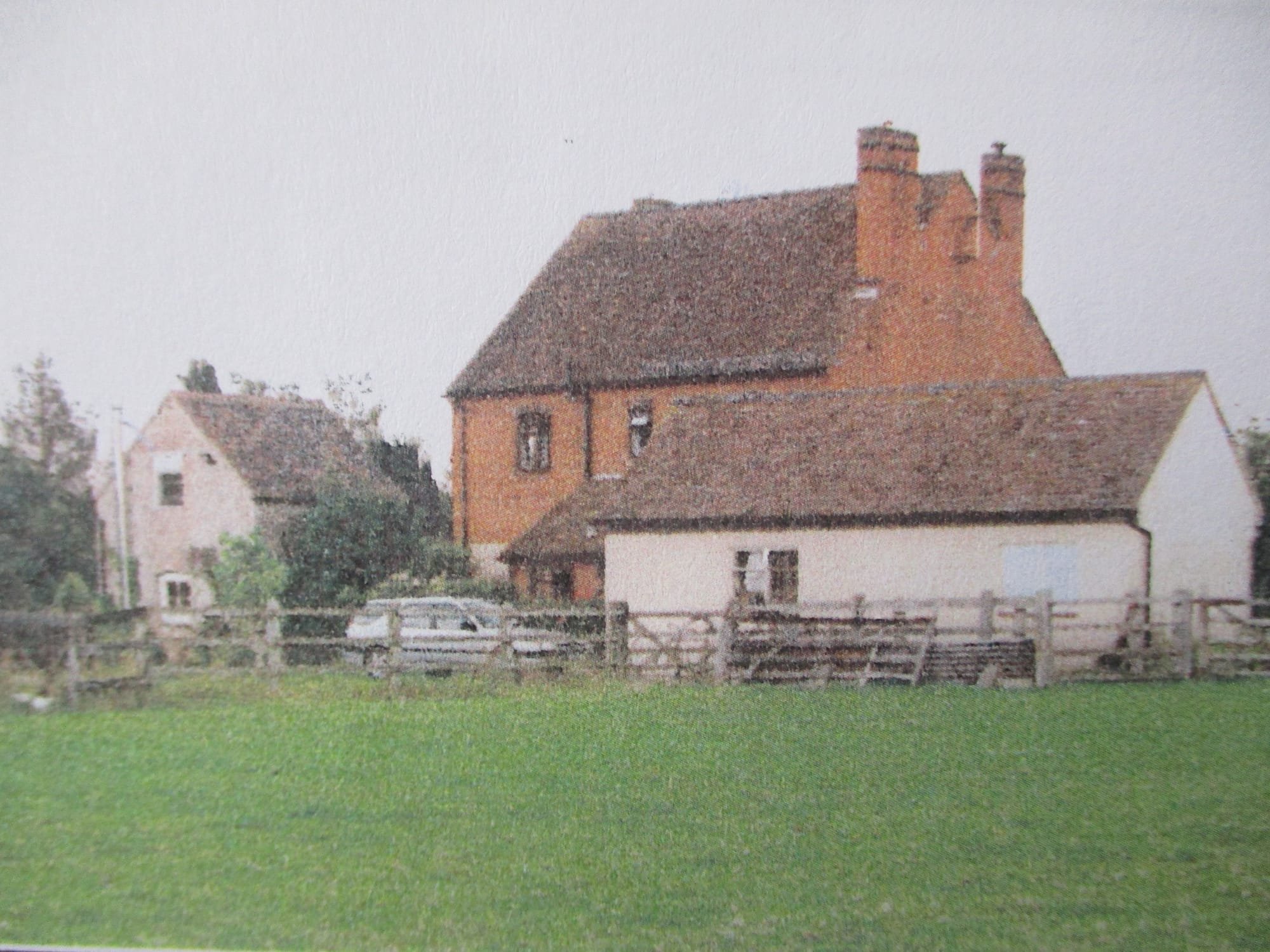
[2002]
